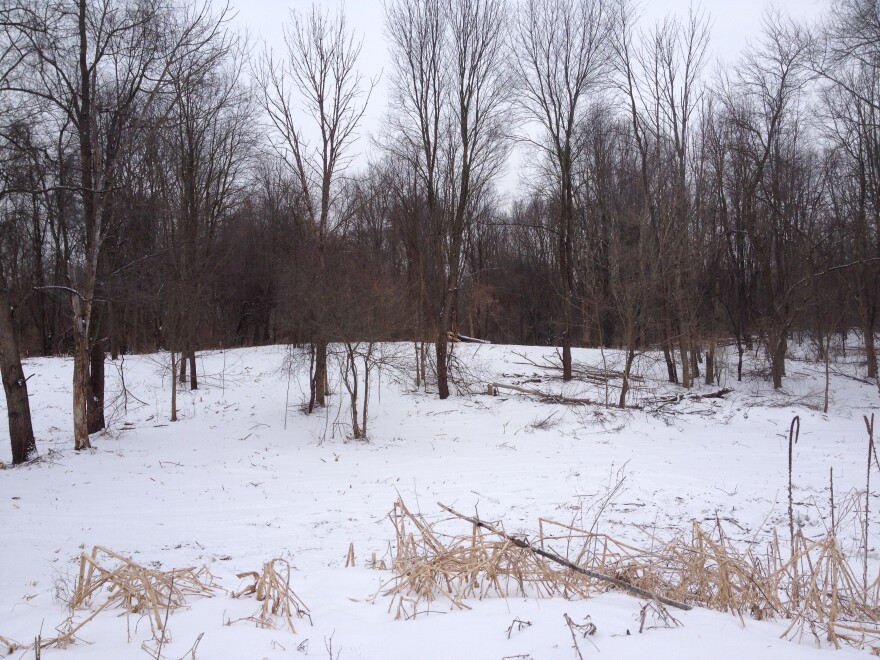When the Kalamazoo Nature Center moved its annual Maple Sugar Festival from the third weekend to the second weekend in March, it wasn’t because organizers had tired of the old date. Instead, they were trying to stay ahead of increasingly warm winters and a shorter sugaring season.
“Even then, moving it up a week we’ve had a few years recently that the sap was pretty much done by the time that festival was happening,” the Kalamazoo Nature Center’s John Brenneman said. (Full disclosure: WMUK is a sponsor of the event.)
Last fall “Why’s That?” asked you what you wanted to know about climate change in Southwest Michigan. Some of you asked how it’s affecting local plants and animals. While scientists and naturalists don’t have the data to answer this for every species, between formal study and informal observation, they do have an idea of how the warming climate is changing things for some of them.
One area where they’ve seen a difference is in the patterns of migratory birds. Brenneman says that since the 1970s, the Nature Center has tracked the birds’ annual spring appearances in the Kleinstuck nature preserve in Kalamazoo. Some of them are short-distance migrants, which spend part of the year in northern states and Canada and part of it in the southern U.S. and Mexico.
“Short-distance migrants are coming back a lot earlier,” Brenneman said. Birds such as hermit thrushes and white-throated sparrows are coming back two to three weeks sooner than they used to.
“And then we have birds that will be staying over winter that used to not, like Sandhill cranes can be seen year round now instead of just during the breeding seasons.”

Brenneman added that long-distance migrants - birds such as orioles and tanagers that can travel as far as South America in the winter - are, so far, coming back to Michigan around the same time they always have. But he says that raises a question about plants and the food they provide.
“We have a cherry tree that grows in our yard and it blossoms and then all the orioles in late April come and feed on those blossoms, but I’d say about four out of the last 10 years the blossoms have passed and have gone before the orioles have arrived and so they’ve lost out on that early nectar source,” Brenneman said.
Brenneman’s not the only one at the Nature Center who’s noticed plants “greening up” sooner than they used to. That has implications not just for birds but for pollinating insects and other species that count on those plants for food.
As the climate warms, some species of insects in Michigan appear to be shifting their ranges. Kelsey Graham is a postdoctoral researcher in Michigan State University’s entomology department. She says it appears that climate change is affecting bumblebees in Michigan.
“Some of these northern species like the yellow banded bumblebee are potentially kind of continuing to move north as we see climate change advance.
“So some of these species that were on kind of their southern edge of their range here in Michigan might disappear from the state as they kind of move farther north and kind of the flip side of that is we might get more southern species moving into Michigan,” she said.
A similar shift may be happening for butterflies. The Kalamazoo Nature Center’s Jen Meilinger says scientists expected the endangered Karner blue butterfly to return to a restored habitat in the Indiana dunes. But so far, it hasn’t.
“But we’re finding them moving farther north and the thought is that we might start getting some of those more southern butterfly species filling in those empty niches,” she said.
Climate might be affecting insects in other ways. The Nature Center’s Ryan Koziatek says the hemlock woolly adelgid - which is invasive and feeds on hemlock trees - is turning up more and more in Michigan. That could be from people unwittingly moving it around. But Koziatek says it’s possible that some recent winters haven’t been cold enough to kill the adelgids.

“What is known is that, as we have warmer winters it’s less likely that there’s going to be that climate check or that cold weather check on that species to kind of keep it from having those larger impacts,” he said.
In sum, as the climate warms, short-range migrating birds are coming back to Michigan sooner. Anecdotally, in some years plants are flowering earlier and maple sugar season is shortening. Bumblebees and butterflies may be changing their range. And warmer weather might be giving the hemlock woolly adelgid a bigger chance to munch on hemlock trees.
While pinpointing exact reasons for a change can be difficult, the Nature Center's Coleman Wilson says informal observations can help fill in the gaps.
“Your anecdote might not match exactly our data but it is part of it and just because it’s a little bit different in your area doesn’t mean the larger scale isn’t changing in a similar pattern,” he said.
What we do know, Wilson added, is that everything in nature is connected, and one change is likely to set off a cascade.
“It’s a web. So that’s how climate change really can be a dangerous thing.”




